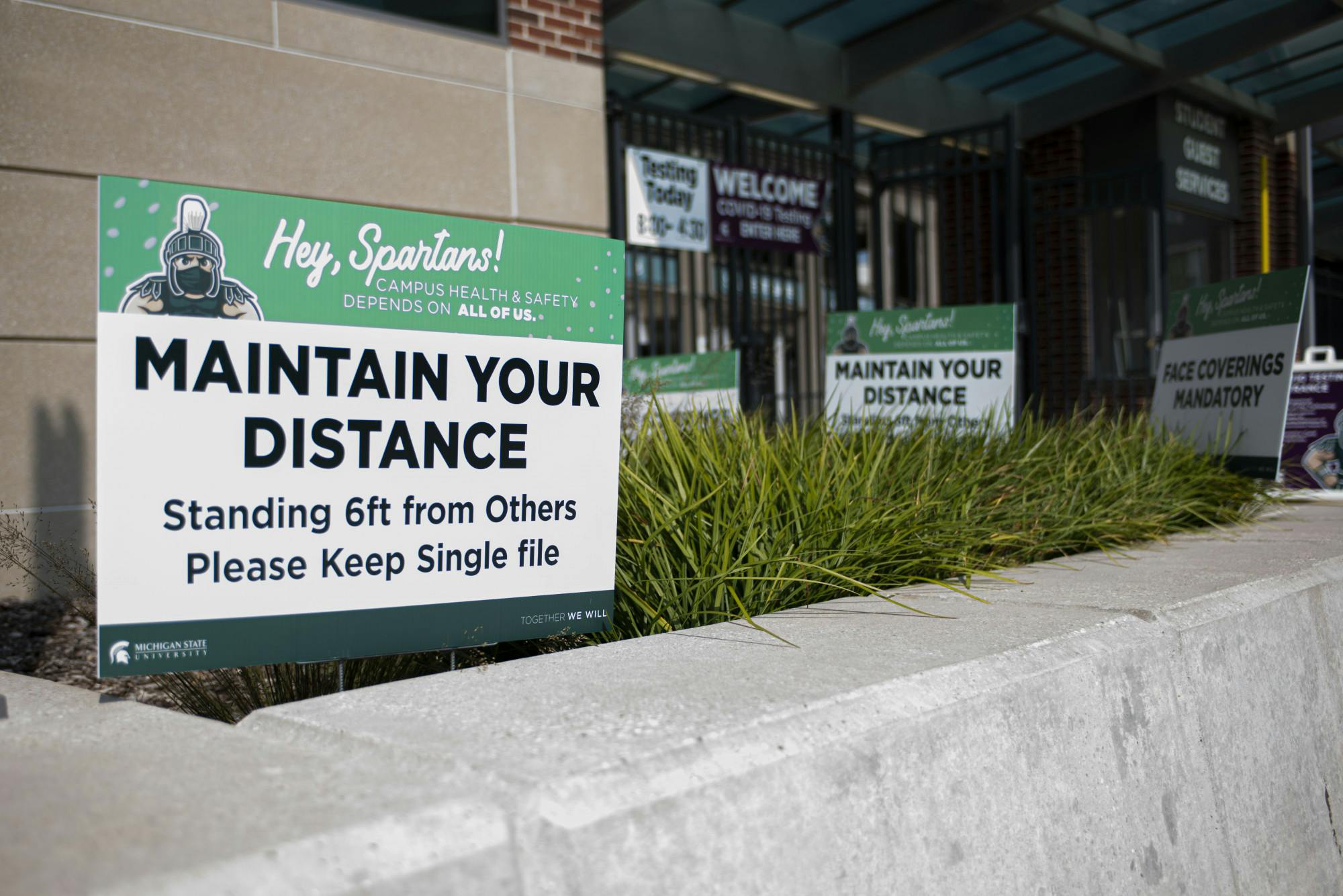With about 5,800 individuals currently enrolled in MSU’s COVID-19 early detection program, MSU College of Human Medicine’s Department of Translational Neuroscience Chair Jack Lipton said they have developed a low-cost solution to monitor outbreaks on campus.
The program, designed to help determine the prevalence of the virus, involves participants providing saliva samples to be processed in order to determine whether or not they might need to get tested for COVID-19.
Currently, 75% of samples are focused on the spread of COVID-19 among asymptomatic students. Lipton said the number really grew following an email from MSU President Samuel L. Stanley Jr. urging students to sign up for the program.
“It’s really important to continue to effectively communicate,” Lipton said. “Remember, we only have (2 to 3,000 people) (living) on campus right now, but we have plenty of people that are working on campus and students that are all living within 10 miles of campus.”
If a student is willing to provide a sample, Lipton said they will test them weekly or bi-weekly depending on preference. Faculty and staff are all tested bi-weekly.
Guidance will follow a potential positive result advising the participant to seek a clinical diagnostic test, including hotlines and links to the local testing sites at Olin Health Center and Spartan Stadium.
Once a test comes back recommending an official diagnosis, that individual is no longer able to continue participating in the program.
“We want to be able to look at prevalence in people that have not had the disease, and if we keep people in that are already positive or that were previously positive, then we are probably artificially lowering our perceived prevalence rate because those people are never going to be positive for us again,” Lipton said.
Though they are yet able to determine what groups and which programs are associated with asymptomatic transmission, Lipton said they are working on being able to access the data needed to do so.
Samples are collected five days a week and are offered to anyone who visits East Lansing at least once per week. Lipton said the issue is being able to operationalize the saliva samples to outlying communities; however, he would like to be able do so further down the line.
Based on anecdotal data on testing done for athletics and self-reporting of individuals volunteering to share whether a positive sample with the programs led to a positive result with a clinical test, Lipton said it appears they have been able to catch positive cases in the very early phases.
The positivity rate shown from results of the program is much lower than that of MSU and Ingham County’s reports.
“Whether or not the students we have that are enrolled in this program are typical of the average MSU student, I don’t know,” Lipton said. “They are self-selecting to be part of the part of the program. As volunteers, they are motivated to do this and whether they are of the same behavioral profile as students that we are seeing a high prevalence of SARS-CoV-2 transmission in, we don’t necessarily know.”
Support student media!
Please consider donating to The State News and help fund the future of journalism.
Discussion
Share and discuss “MSU early detection program to monitor potential COVID-19 outbreaks, 5,800 enrolled” on social media.








